Art World
We Published More Than 2,700 Stories This Year. Here Are 22 of Our Favorites
We take a look back at some of the most serious, most joyful, and most exciting stories of 2019 with a selection of staff favorites.

We take a look back at some of the most serious, most joyful, and most exciting stories of 2019 with a selection of staff favorites.

Artnet News

We’ve really outdone ourselves this time.
A year ago, as we sat on the precipice of 2019, we took a glance at our archive from the previous 365 days to discover that we had published more than 2,000 articles over the course of 2018.
In 2019, that number grew to more than 2,700, a 35 percent increase.
And we’ve covered it all. From groundbreaking news stories to incisive analyses to lists of all the best movies, books, and exhibitions, we have left no stone unturned.
Maybe you didn’t have time to read everything right as it came out. Don’t worry. We’ve put together a selection of 22 of our favorite stories from 2019, including one by each editorial staff member at Artnet News, for you to catch up on during your holiday break. For context, we’ve also provided a snippet from each piece.
Happy reading—and happy new year!
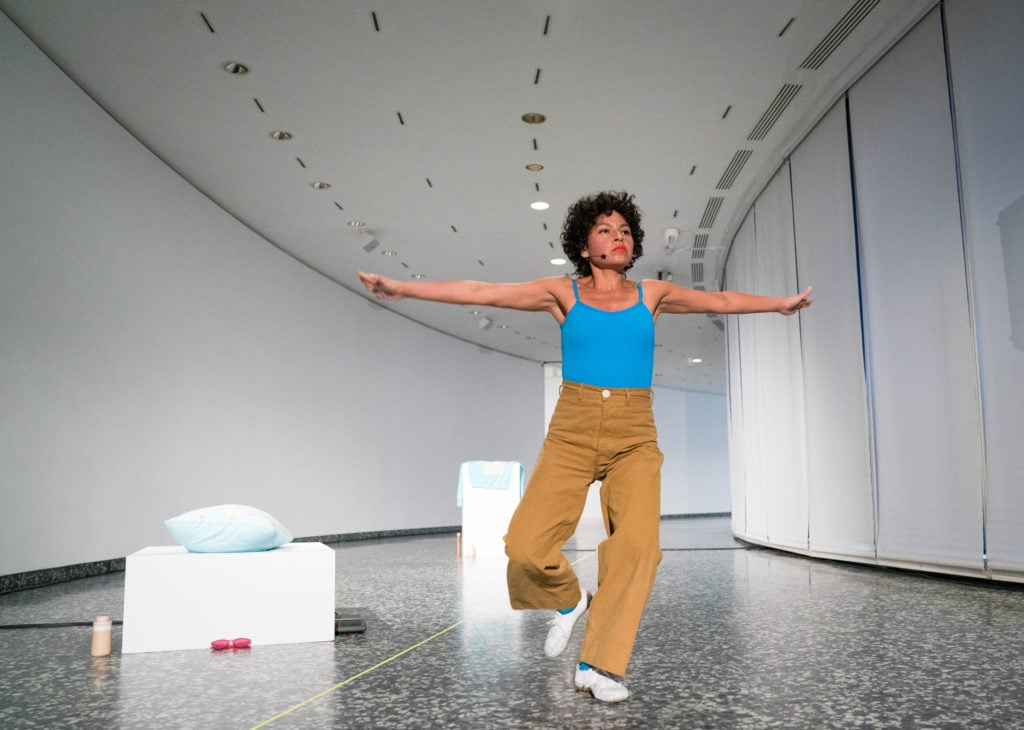
Mariana Valencia, Album (2018) at the Hirshhorn Museum and Sculpture Garden. Photo: Erin Schaff, courtesy of the artist.
“Just 11 percent of all acquisitions and 14 percent of exhibitions at 26 prominent American museums over the past decade were of work by female artists. According to a joint investigation by Artnet News and In Other Words, a total of 260,470 works of art have entered the museums’ permanent collections since 2008. Only 29,247 were by women.”
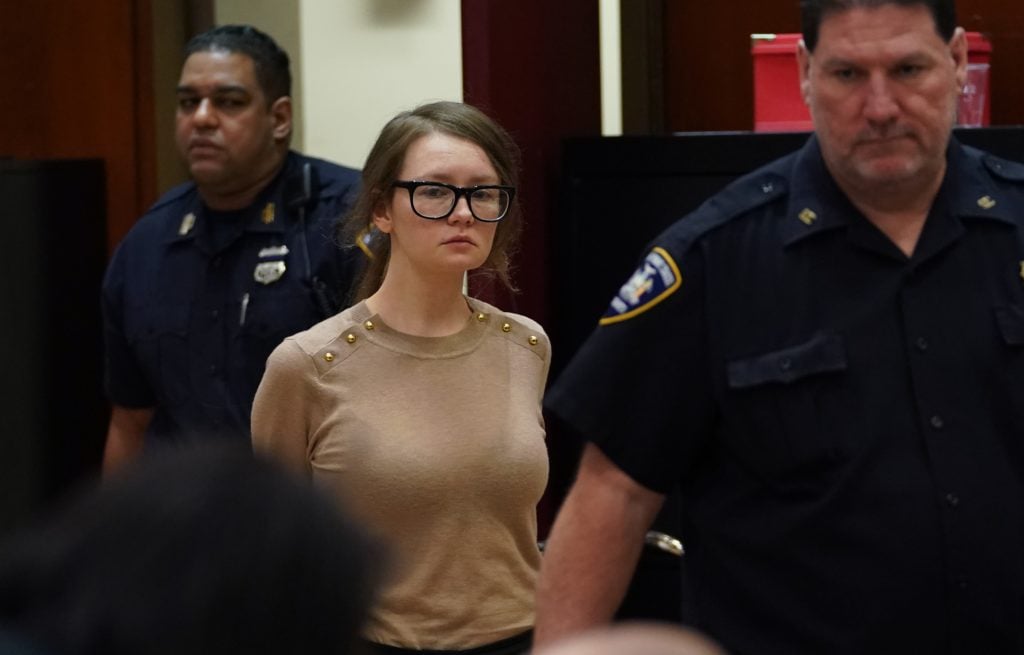
Anna “Delvey” Sorokin in a courtroom during her trial in New York. Photo by Timothy A. Clary/AFP/Getty Images.
“While many observers have been bewildered by how Anna Sorokin—also known as Anna Delvey—was able to fool people into believing her story, the allegations at her trial suggested several extensive, sometimes comical, missteps. Here are five key blunders that led to her eventual indictment.”

Norwegian writer Karl Ove Knausgaard. Photo by Ulf Andersen/Getty Images.
“Oh, what he could have done with all that money he spent on the Munch! A vacation his children would never have forgotten! A renovation of his home so each boy and girl could have his or her own bedroom! Even a nice juice press for the family to enjoy all the apples and pears in his garden! ‘Instead,” Knausgaard writes in a new book, ‘they got a little picture on a wall.’”
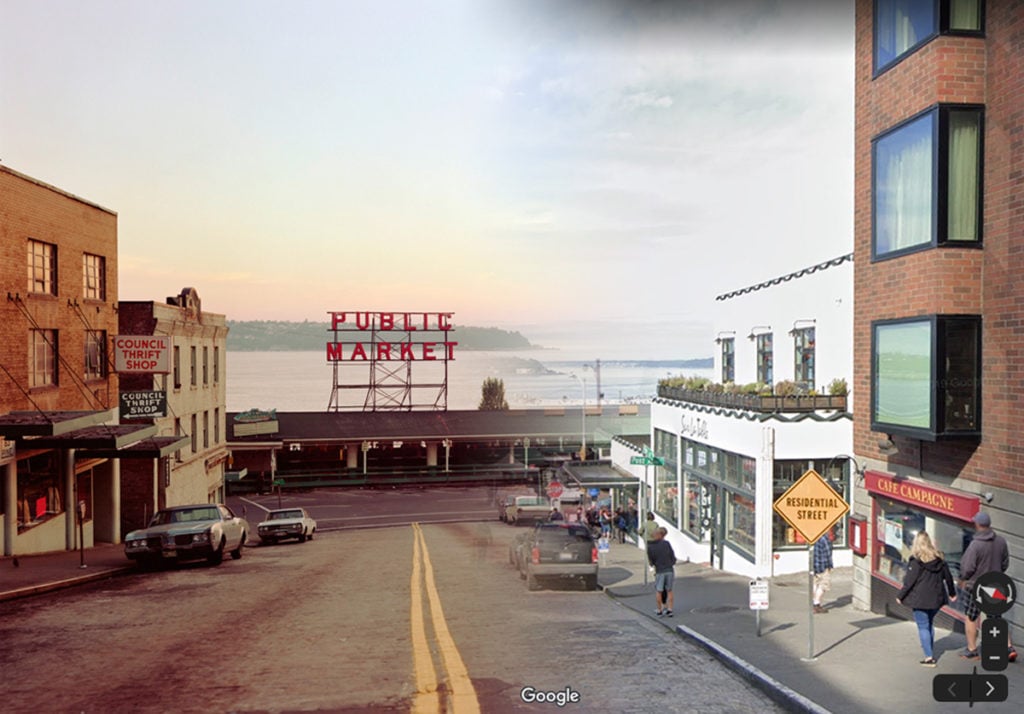
Stephen Shore’s Pine Street, Seattle (1974) on the left, bleeding into an image of the same street from Google Street View.
“Google’s glitchy depictions of the world have changed the way we think about the landscape. To demonstrate this, we picked out a selection of famous photographs from the last 100 years and revisited them through Google Street View. A lot has changed. But it’s not all different.”
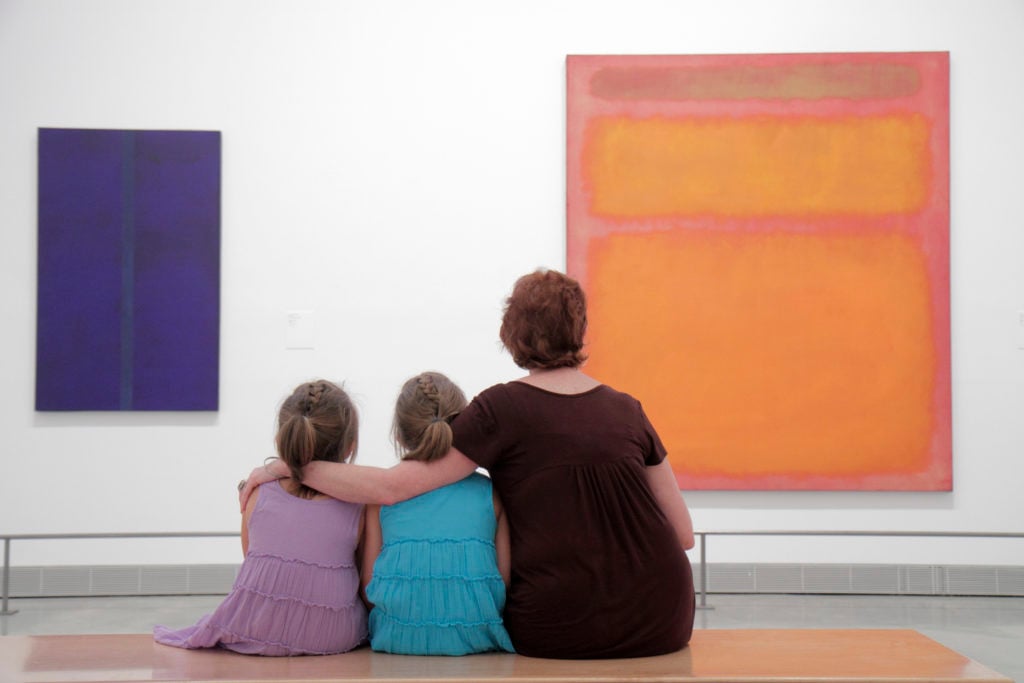
A mother and her daughters looking at Mark Rothko paintings in the Philadelphia Museum of Art. Photo: Jeffrey Greenberg/Universal Images Group via Getty Images.
“Some say the discrimination they experience is outright; others say it is more insidious, woven into the fabric of workplaces built under patriarchal conditions that often fail to value men as fathers and mothers as workers.”
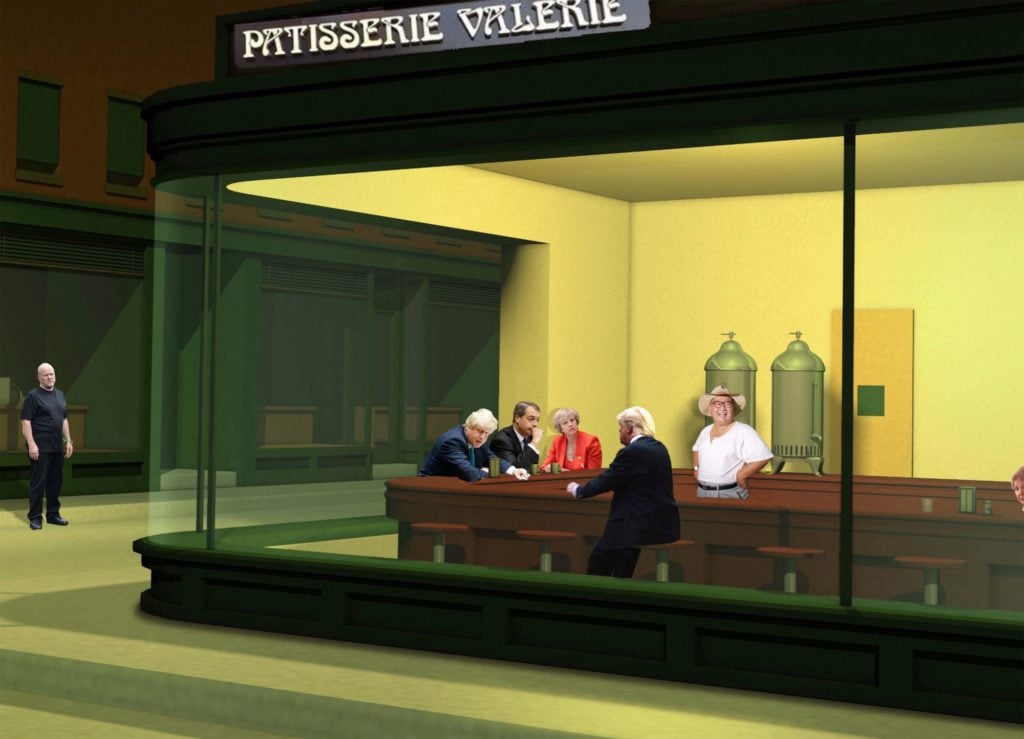
Cold War Steve, Shitehawks (2019). Courtesy of the artist.
“Thousands of civil servants are being redeployed across the UK as Boris Johnson’s government ramps up preparations for Brexit. But for one civil servant, the deepening national crisis has meant a very different kind of career change. Christopher Spencer, also known as Cold War Steve, is now a full-time, in-demand artist.”

David Lynch at the Cannes Film Festival in 2017. Photo: Valery Hache/AFP/Getty Images.
“There are some who see David Lynch’s transcendently spooky, mythopoetic work in film and television—and in particular his extraordinary-for-all-its-faults masterwork Twin Peaks—as among the greatest works of art of our time. Lynch, however, sees cinema as one arena and fine art as another—and he has every right to make the distinction.”
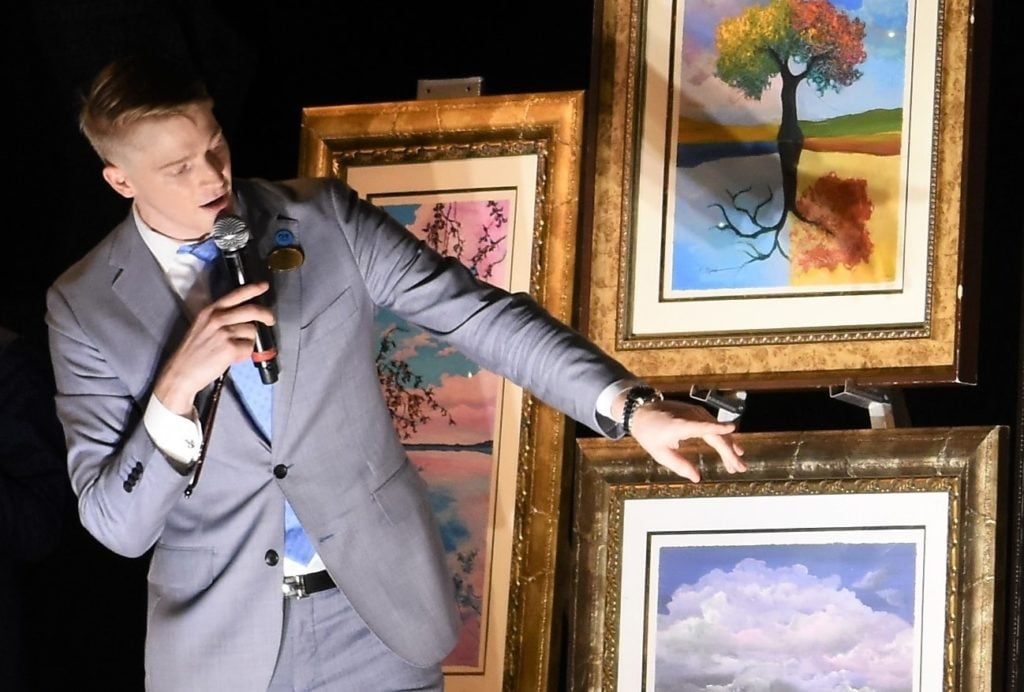
Park West art auctioneer Alex White. The tree painting is by David Najar. Photo by Park West.
“With his pleasantly urbane accent, Robert Borotescu set his audience at ease, acknowledging that they probably never had the time to visit art museums and galleries. But they were here now, and it was his job to make sure that they went home with something they absolutely loved.”
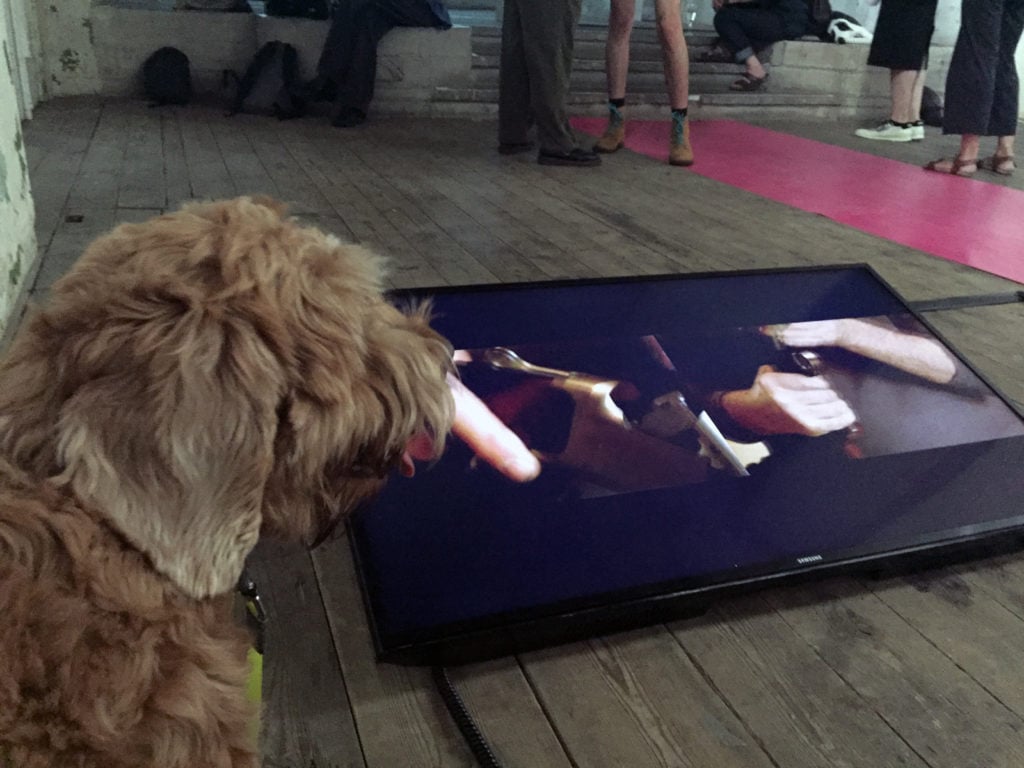
Pico watches a video work that he appreciates being installed on the floor.
“For proof that an artist’s best friend is a dog, we headed to “The Dog Show.” A small but super dog-friendly gallery in South London is mounting the exhibition, which is curated by the pets of some of the city’s art-world luminaries, for its 35th birthday.”

Rene Russo and Jake Gyllenhaal in Velvet Buzzsaw. Image courtesy of Netflix.
“If you’ve ever watched a movie set in the the art world, you know what to expect: collectors traipsing about in cocktail attire and furs; artists being tortured by their genius; everyone speaking in vague but definitely pretentious accents; blunt bobs and oversize glasses in every direction; and art dealers—the ringleaders of this whole monied hoopla—as the inevitable villains.”
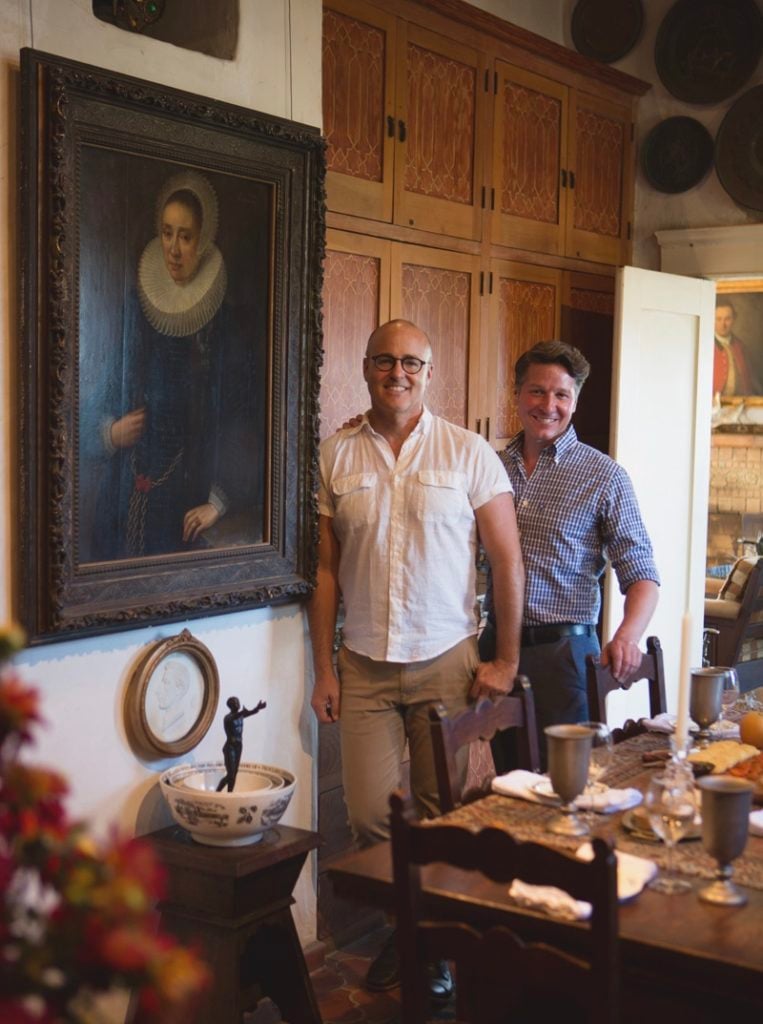
Craig Gilmore and David Crocker with Portrait of a Lady. Photo: Christopher Lapp.
“When I first met a well-dressed, tan American man named Craig Gilmore at a party in Warsaw, I asked the same question any two foreigners asked one another: What brings you to Poland? His answer: ‘How much time do you have?’”
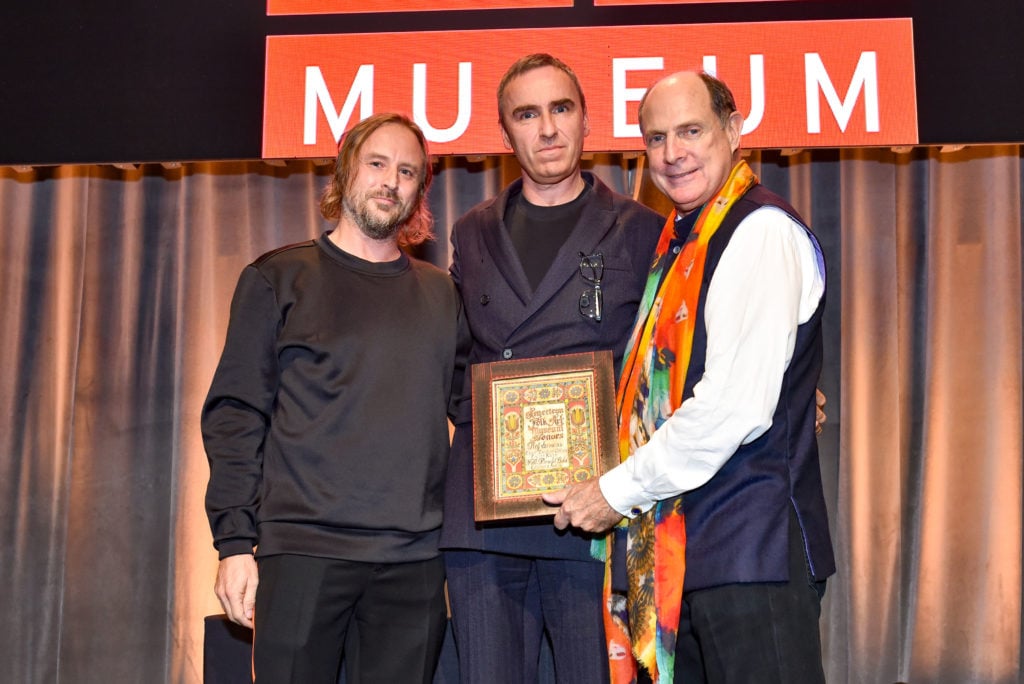
Sterling Ruby, fashion confidant Raf Simons, and American Folk Art Museum president Monty Blanchard at the museum’s 2018 fall benefit gala. Photo by Sean Zanni/Patrick McMullan via Getty Images.
“Personally, I support Ruby’s commitment to branching out. I’m just skeptical that couture solves the larger economic and philosophical problems disillusioning him about the contemporary art world.’”
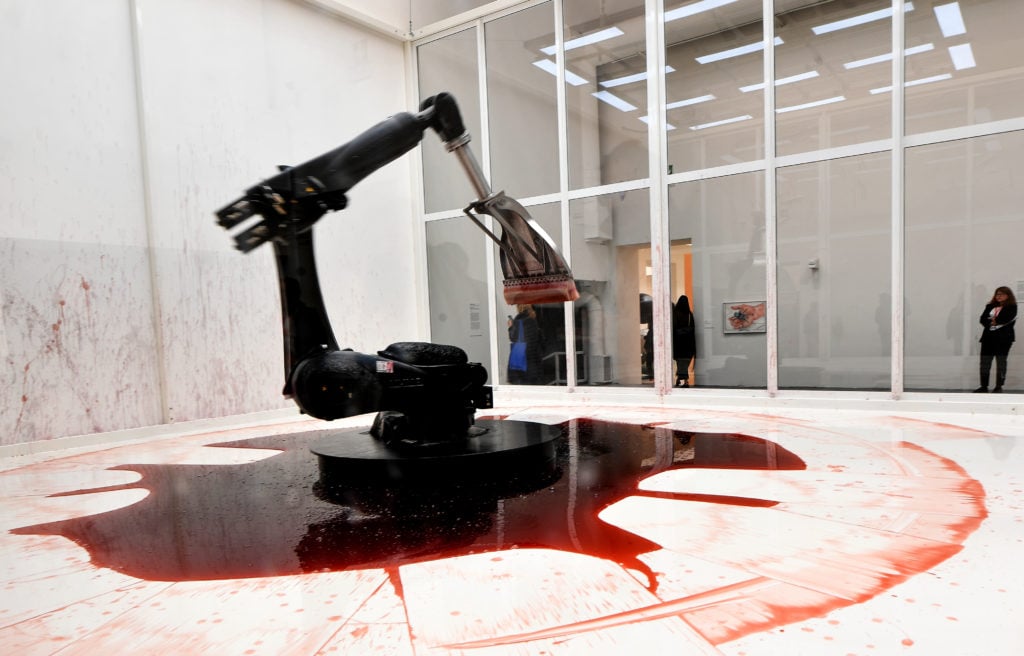
A work by Chinese artists Sun Yuan and Peng Yu at the Venice Biennale. Photo: Tiziana Fabi/AFP/Getty Images.
“The title curator Ralph Rugoff chose for his 2019 version of the Venice Biennale is “May You Live In Interesting Times.” The phrase has a suggestive backstory: It is a fake Chinese proverb, first uttered by a British diplomat in the context of the rise of fascism in Europe. So the name contains a lot in it that potentially resonates with the world as it is unfolding around us, in Italy and beyond—about representation and mis-representation, about the struggle to find metaphors to describe a world slouching ever closer towards the brink of disaster.”
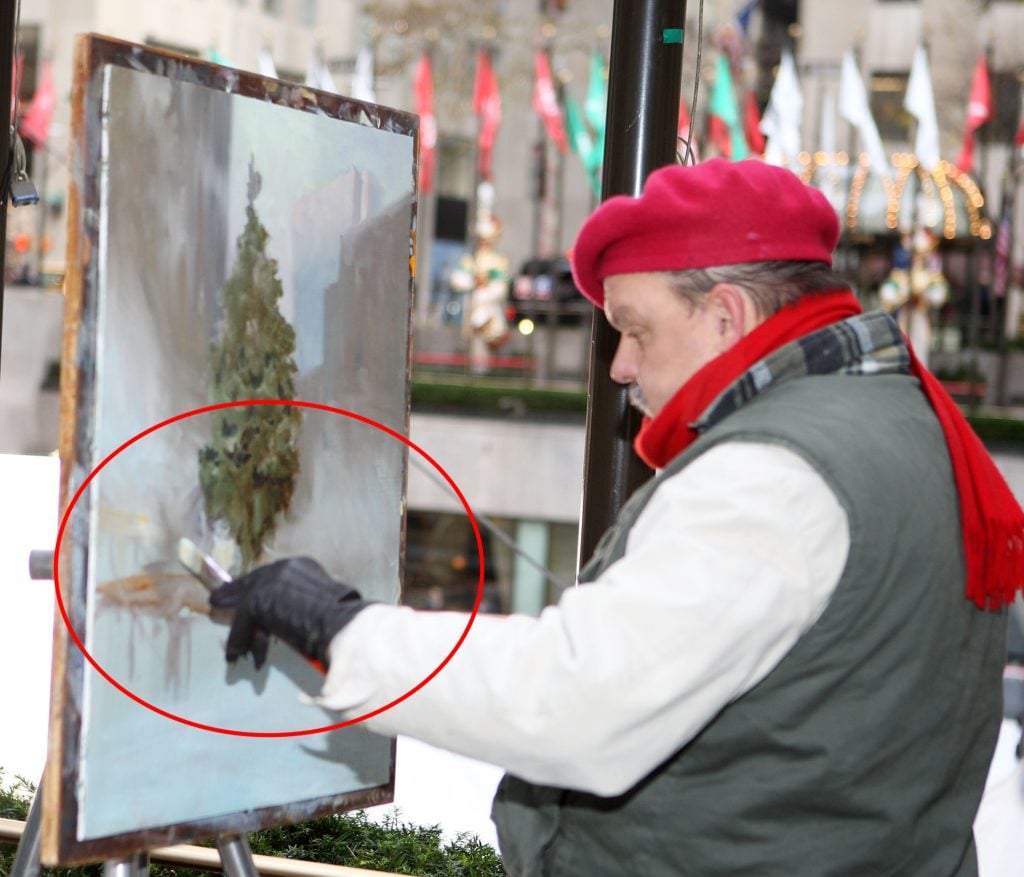
Artist Thomas Kinkade paints the 2007 Rockefeller Center Christmas Tree November 30, 2007, in New York City. Photo by Bennett Raglin/WireImage/ Getty Images.
“Barack Obama is one, so is Oprah, Angelina Jolie, and Cloris Leachman. Not to mention Don Rickles, Bill Gates, and Jerry Seinfeld. What do all of these impressive people have in common? They are all golly-handed, gibble-fisted, port-sides, southpaws—that is to say, they are all left-handed.”
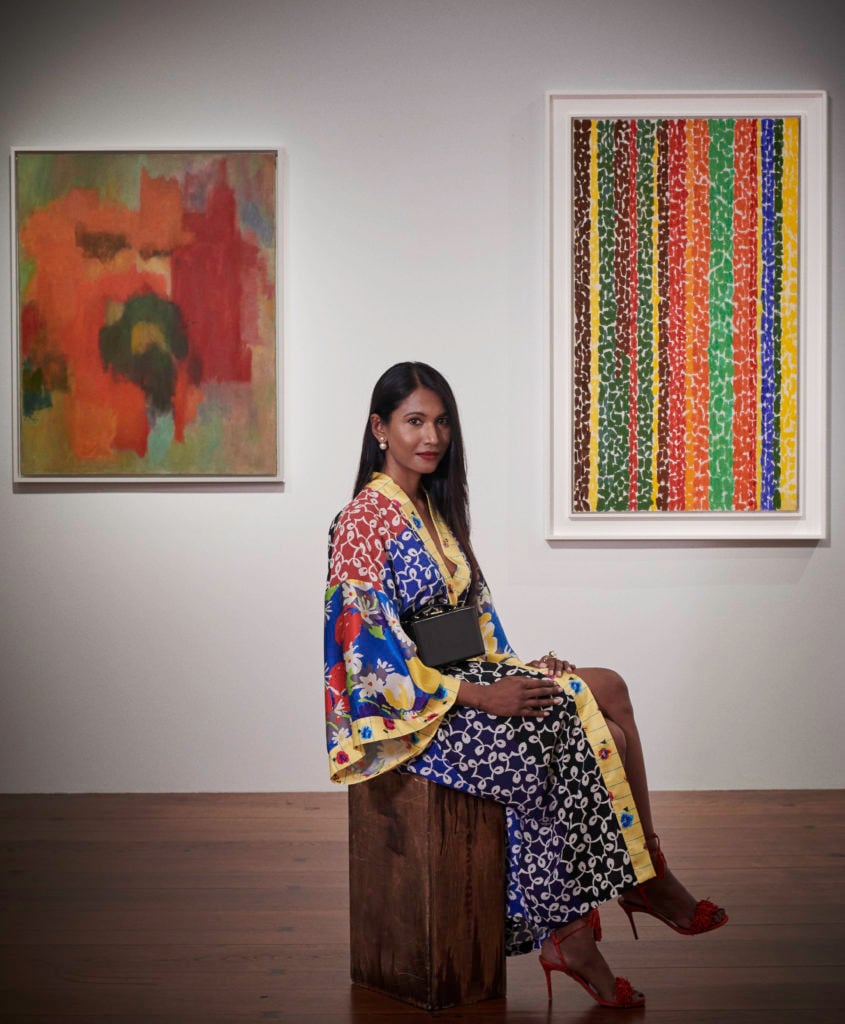
Sukanya Rajaratnam. Photo by David Lipman.
“Sukanya Rajaratnam is a force to be reckoned with. A partner at Mnuchin Gallery, where she’s worked for over a decade, Rajaratnam has become one of New York’s most influential art dealers, overseeing the gallery’s high-level institutional sales and the organization of landmark exhibitions for such artists as Cindy Sherman, David Hammons, Sam Gilliam, and Ed Clark.”
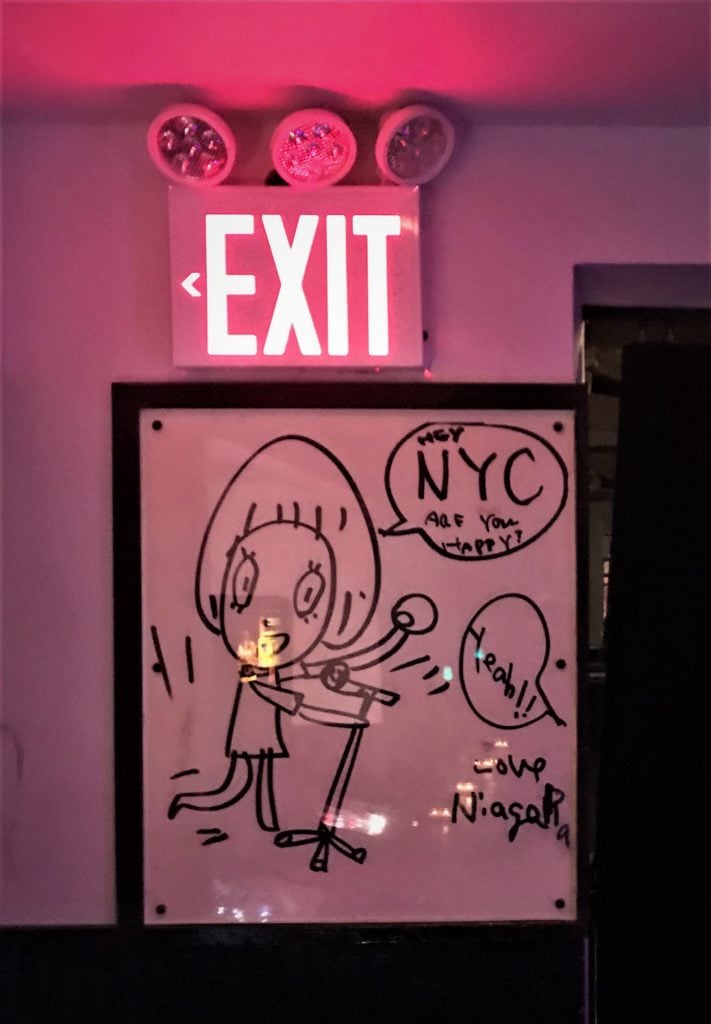
A Nara in the back of a bar. Photo: Nate Freeman.
“A decade ago, the artist Yoshitomo Nara finished installing a gallery show and got a few drinks at the East Village bar Niagara, a punk scene mainstay on Avenue A that stands out even in a neighborhood full of similar dives. After a while, flush with inspiration, Nara began to draw directly on the walls, conjuring up a bevy of his signature figures: angsty boys and girls, lonely and besotted with rock ‘n roll, banging out tunes on drums and guitars. When he was done, he signed and dated the work, and left.”

Andy Warhol, Unidentified Photographers (ca. 1981). The Andy Warhol Museum, Pittsburgh. © 2018 The Andy Warhol Foundation for the Visual Arts, Inc. / Licensed by Artists Rights Society (ARS), New York.
“One might think that the recent swell of interest in black art would have eased some of the burdens faced by those who have spent years systematically excluded from major galleries and museums. But many black artists say that the paradigm brings unique challenges of its own—and, at the same time, hasn’t corrected for the legacy of racial bias in the mainstream art world.”
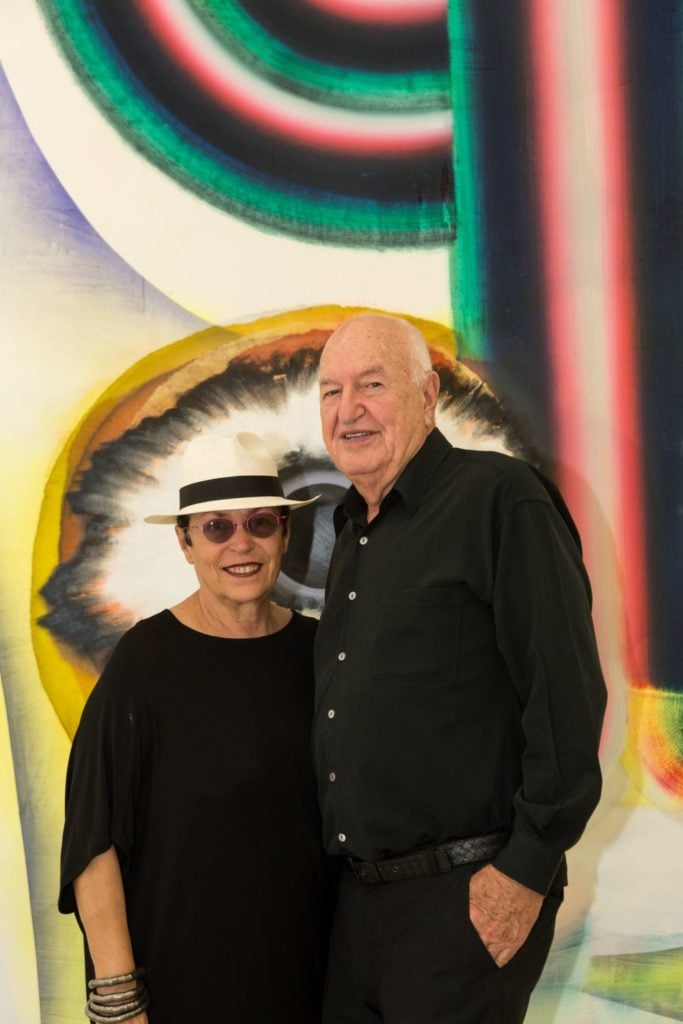
Mera and Don Rubell. Photo by Chi Lam. Image courtesy of the Rubell Museum.
“‘Whether we like it or not, wherever art goes, it changes neighborhoods,’ Mera says. And, admittedly, ‘we’re benefiting.’”

An Iranian woman walks past an Iranian flag painted on a wall in Tehran, Iran. Photo by Scott Peterson/Getty Images.
“Under the terms of the sanctions, Iranians cannot wire money to any foreign bank account nor can they receive international wire transfers. Many European, British, and international companies are also withdrawing from Iran to protect themselves from US sanctions.”

Protests outside of the Marciano Foundation in Los Angeles. Photo: Catherine Wagley.
“The forces driving this push—ranging from a mandate to diversify staff to the rising cost of living in urban centers—are not necessarily specific to the art world. Similar efforts have rippled through higher education, as adjunct professors organize, and across the publishing industry.”
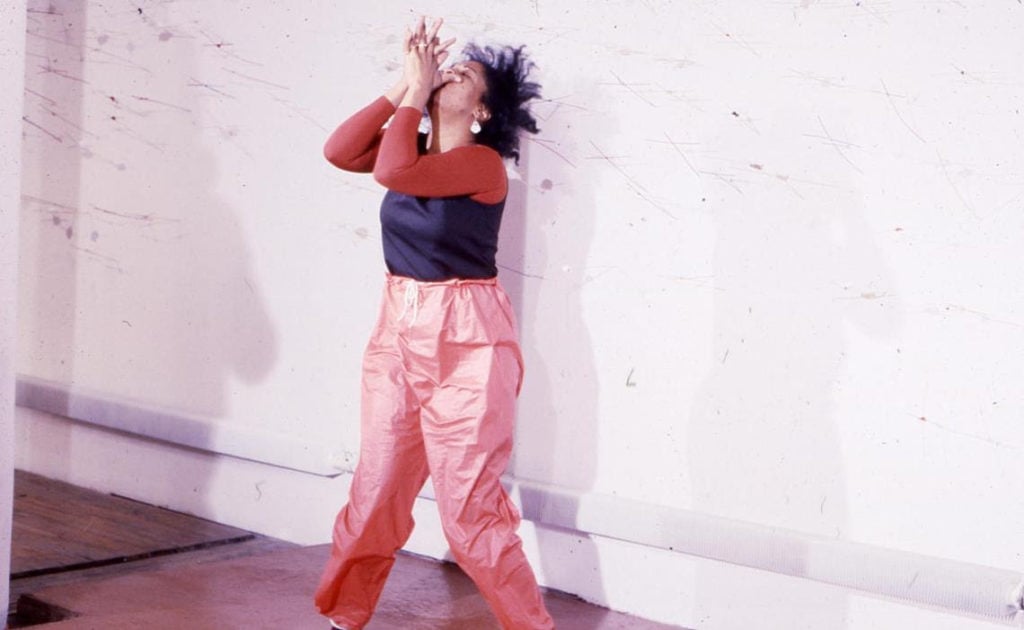
Senga Nengudi performing “Air Propo” at JAM, 1981. Courtesy Senga Nengudi and Lévy Gorvy.
“Bryant, now 69, has clearly never been shy about confrontation. At 12, she announced at a family dinner in Columbus, Ohio, that she was going to be Picasso’s first black mistress—’because I’m going to be an artist and that’s the only way the world will look at my art,’ she recalls now, laughing.”

Ballroom Marfa in Marfa, Texas. Photo: Veronique DUPONT/AFP/Getty Images.
“One of the most politically charged works in the show is a domed outdoor sculpture by Cortez made of chainlink interwoven with strips of mylar. The work responds to the Trump administration’s policy of separating migrant families at the border and detaining children.”